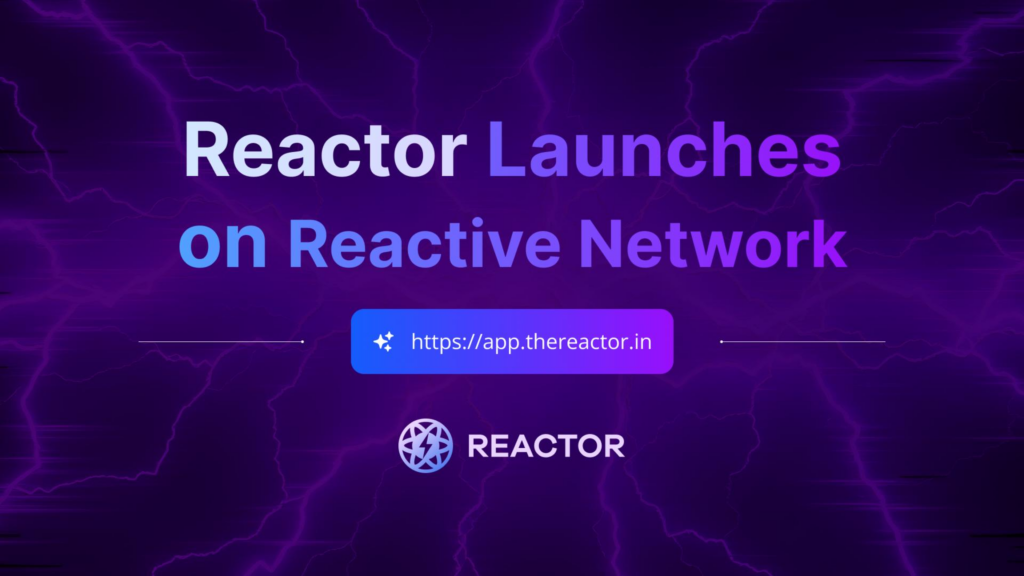The Next Stop for Decentralized Finance: No-Code Automation and Cross-Chain Integration
Decentralized finance (DeFi) is undergoing a transformation from “complex code-driven” systems to “user-friendly automation.” On April 10, 2025, the Reactor platform officially launched on the Reactive Network mainnet, marking a new phase in this trend. This no-code platform, created by developer Harsh Kasana, is designed to enable users of any technical background to create cross-chain automated strategies—from stop-loss protection to complex event-driven trades—with a simple drag-and-drop interface.

Technical Architecture: Event-Driven and Reactive Smart Contracts
At the core of Reactor are its “Reactive Smart Contracts” (RSCs). Unlike traditional smart contracts that depend on external triggers, RSCs, built on the ReactVM architecture of Reactive Network, respond in real time to cross-chain events and autonomously execute logic. For example, when the ETH price on Ethereum falls below a preset threshold, Reactor can automatically execute a buy order on the Avalanche chain. This capability is enabled by Reactive Network’s “Inversion of Control” framework, which seamlessly integrates event listening, data validation, and inter-chain communication.
Since the Reactive Network mainnet launch in March 2025, an upgrade via the Amber hard fork introduced the Sequencer module, optimizing cross-chain transaction ordering and verification efficiency, thereby laying the foundation for Reactor’s stability. Its tokenomics are also noteworthy: the REACT token is used to pay for on-chain automation transaction fees, and a portion of these fees is burned through a deflationary mechanism to incentivize long-term ecosystem participation.
Market Significance: Filling the Void in DeFi Automation
Current DeFi automation tools mainly focus on single-chain scenarios, such as leverage management by InstaDApp or yield aggregation by Yearn. Reactor’s native cross-chain design addresses three major pain points:
-
Lowering the User Barrier:
A pre-built template library (e.g., for liquidity mining and arbitrage strategies) enables ordinary users to deploy strategies without needing to understand Solidity. -
Enhancing Capital Efficiency:
Cross-chain liquidity integration reduces the friction cost of transferring assets between chains. -
Increasing Security:
On-chain execution reduces reliance on oracles, thereby lowering centralization risks.
According to the 2025 DeFi Staking Platform Report, the TVL of cross-chain protocols has grown by 320% year-over-year, and collaboration between Reactor and projects such as Balanced (a cross-chain DEX) could further drive standardization in multi-chain asset management.
Industry Trend: The Convergence of No-Code Tools and AI Agents
No-code platforms are not unique to Reactor. For instance, Cod3x simplifies the development of trading bots through API integration and backtesting tools, while Thirdweb allows users to deploy NFT marketplaces without code. However, Reactor differentiates itself with its “event-driven” architecture, aligning with Delphi Digital’s predicted “DeAI (Decentralized Artificial Intelligence)” trend—where AI agents will eventually replace traditional front-ends by guiding users in strategy-building through natural language interactions, and Reactor’s modular design provides the infrastructure for such integration.
Additionally, potential collaboration between Reactor and liquidity protocol Tokemak is noteworthy. Tokemak directs funds into high-demand chains via tokenized liquidity pools, and when combined with Reactor’s automated strategies, it may dynamically optimize cross-chain capital allocation and reduce impermanent loss.
Future Challenges and Ecosystem Expansion
Despite its promising outlook, Reactor still faces two major challenges:
-
Cross-Chain Security:
Reliance on the underlying consensus of Reactive Network necessitates safeguarding against bridge attacks and risks of data fragmentation. -
Market Competition:
Chainlink Automation now supports multi-chain triggers, and native Ethereum L2 solutions (such as Starknet) are also optimizing execution speed.
Reactor plans to launch DAO governance in Q4 2025 and integrate mobile applications with protocols such as Curve and Uniswap V4. For developers, its SDK supports custom RSCs that can connect to APIs from exchanges like JuCoin, thereby enabling coverage of broader financial scenarios.




